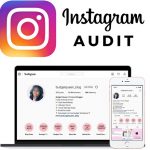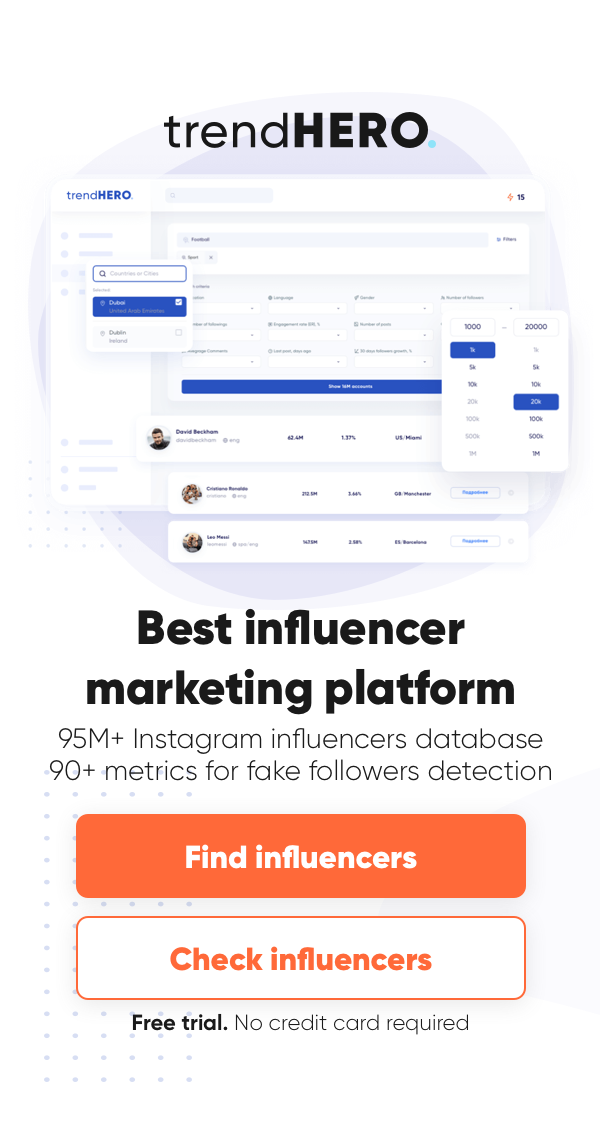A good company becomes legendary when it cannot be confused with its competitors – and that is due to its unique brand identity.
What happens when you mention one of the global brands – Nike, Starbucks, IKEA, or Apple? Most likely the logo, the font, the commercial, and even the tone with which the company communicates with its audience.
What is a unique brand identity?
Brand identity is one of the first vital skills that anyone aiming to learn how to start a business should establish. Well-developed brand identity combines brand values, communication style, and visual and emotional characteristics. For example, the visual part of Coca-Cola’s brand identity includes the bright red color, the brand’s ornate font, and even the shape of its bottles. And the emotional part contains a unique feeling of summer and youth, a trip to the sea with friends in a car, and the feeling when you take the first sip of an ice-cold drink in the heat. These associations are not accidental: Coca-Cola has spent decades and millions of dollars to make us perceive it that way.
It is essential to understand the difference between brand identity and brand image:
- Brand identity is how you want to be perceived by your audience. It includes the logo, slogan, tone of communication, values, and more.
- Brand image is how the audience perceives you. It is built from brand reputation, trust level, first impression, and the emotions the company evokes.
A sign of good branding is a situation in which a well-developed brand identity matches the brand image. In this way strong brand identity can bring in customers.
Developing a strong brand identity is an eight-step process that helps define the most important characteristics of a brand. Its purpose, personality, the emotions it evokes in people, and how the brand identity aligns with the company’s mission. Below we break down all five steps in detail.
Stage 1: Approval of the brand identity concept
The concept describes your company for the future. It should be inspiring and ambitious. Ideally, it should fit into one sentence but not be too literal. As you begin to define your company concept, try to answer the following questions:
- What are your core products and services?
- What products and services have you never offered?
- What is unique about partnering with your company?
- How do you see your company in five years?
A great example is JetBlue’s vision: “Bring Humanity Back to Air Travel.”
Step 2: Mission statement
The company’s mission defines the company’s purpose. It should be simple, straightforward, easily reproducible, and free of jargon words. It should motivate both the company’s employees and the consumers of your products. The company’s mission is prescribed in the development of the brand book. Approving the company’s mission, try to answer the following questions:
- What market needs does your company meet?
- How does the company meet those needs?
- What key principles define your company’s approach to its activities?
- Why should the consumer choose you over your competitors?
Walt Disney Company’s mission statement is a great example: “The mission of The Walt Disney Company is to entertain, inform and inspire customers around the globe through the power of unparalleled storytelling, reflecting the iconic brands, creative minds and innovative technologies that make ours the world’s premier entertainment company.”
Step 3: Emotions
This is difficult to define but necessary. You need to determine the emotion consumers of your products should feel when they encounter your brand. When selecting your brand emotion, try to answer the following questions:
- What emotions should consumers feel when they use your product/service?
- If your brand were a person, how would you describe their personality?
Some great examples of brands’ emotions are:
- Volvo – safety
- Disney – magical
- Lamborghini – exoticity
Brand emotion is the embodiment of a company’s heart, soul, and spirit. It is best described in one word.
Step 4: Individuality as a part of brand identity
As with a person, a brand’s personality lies in the way it speaks, behaves, thinks, acts, and reacts. That’s how a strong brand is personified: human characteristics are applied to a business. For example, Apple is young and trendy, whereas IBM is mature and grounded.
Tell your story
What inspired you to create your brand? How do your products and services benefit your customers? A thoughtful backstory will help customers better understand and connect with the brand more emotionally.
Spell out your key values
A transparent value system is vital for any strong brand. It defines the corporate culture and adds integrity to the business. Each company should have a specific goal, whether it is to produce quality products or to promote environmentally friendly consumption. And it helps to increase response rate of your influencer outreach, as far sa clear and public list of values shows your main features.
Determine the target audience
Draw a portrait of the potential customer – demographics, profession, social status, etc. This will determine what external attributes and tone of communication you choose for the brand.
Step 5: Positioning or value proposition
A brand positioning or value proposition is a statement describing the uniqueness of a product/service and its value to the consumer in one or two sentences. It should define your audience and the category in which your brand exists, denote the specific benefit of buying the product/service, differentiate you from the competition, and inspire customers.
As you think about strong brand positioning, answer the following questions:
- Who are you talking to? (Target market, demographic group, personality)
- What market segment does your product or service belong to?
- What does your brand promise? (In practical and emotional terms)
For example, Warby Parker is an excellent example of positioning: “Warby Parker was founded with a rebellious spirit and a high purpose: to offer designer clothes at a revolutionary price and to do socially active business.”
Step 6: Brand attributes
This step consists of tone of voice, brand color palette, typography, and logo. But don`t forget to pay attention to the brand identities scale.
Tone of voice
It’s time to give the brand a voice. How will you communicate with your audience? Clearly and to the point or with lots of puns and jokes? Once you’ve chosen a tone of voice, make sure you stick to it in all communication channels: website texts, UX copywriting, blog posts, emails, etc.
Brand color palette
A secret that any marketer knows: specific colors evoke certain emotions. Choose one or two signature colors and use them consistently on your website, print products, social media, and other mediums. That way, your brand will be associated with a specific color palette over time.
Typography based on brand identity
As with a color palette, the right typeface can be your brand’s card. Classic serif fonts are usually associated with tradition and stability, ornate fonts with elegance and premium, and softer, rounded fonts with technology and innovation.
Logo
The logo is the first thing a potential customer will see. It is a symbol of a business. The main thing is that it should be memorable and reflect the brand’s essence. Professional design tools, like a logo maker, are a great way to come up with unique logo designs that perfectly showcase your brand.
Step 7: Brandbook
Strong brand identity is a rather tricky thing to understand, especially for those not involved in its creation. That’s why creating a brand book that spells out every detail – tone of voice, fonts, brand color palette, brand values, and other attributes is essential.
Step 8: Brand presence
To add integrity to the brand, ensure every detail matches the brand book. Here’s what you need to pay special attention to:
- Website. Customers come here to learn more about the company – so try to create a website that matches the brand identity. Also, choose a suitable domain name to give the site a more professional look.
- Packaging. Packaging can be just as important a part of a well-developed brand identity as the product itself – think of Apple’s stylish packaging, McDonald’s Happy Meal, or Tiffany & Co.’s iconic turquoise boxes. So if you’re selling merchandise, consider original and memorable packaging in your brand’s colors.
- Business cards. Yes, business cards have become less popular in the digital age – but they’re still an effective way to promote your brand and expand your circle of professional acquaintances. Nowadays, they are very easy to create using business card templates. The shape, colors, and even texture of business cards can all help reinforce the correct brand perception in customers’ eyes.
- Email newsletters. Email services have made it possible to send newsletters with unique designs instead of the usual textual emails. Take advantage of this: use your brand’s logo, font, and palette in marketing emails and newsletters.
Pay attention to these nuances because these communication channels make your product memorable. And also get brand advocacy.
Conclusion
Well-developed brand identity sets a business apart from the rest and helps customers establish an emotional connection with the company. All these things related to brand identity make your product memorable. In the long run, this leads to an increased loyal audience and a deeper involvement of customers in the brand’s marketing activities.
Author:
Vanessa Friedman is a content marketing professional who helps companies attract visitors, convert leads and close customers.
Previously, Vanessa worked as a marketing manager for a tech software startup. She graduated with honours from Columbia University with a dual degree in Business Administration and Creative Writing. In case of any suggestion or inquiry, please feel free to reach out to her on GuestPostingNinja@gmail.com
We also recommend to read
 How to Run an Instagram Audit in 2023 (Free Audit Tools Inside!)
How to Run an Instagram Audit in 2023 (Free Audit Tools Inside!)  How to Find Influencers on Instagram in 6 Easy Steps
How to Find Influencers on Instagram in 6 Easy Steps  Influencer outreach. How to begin, and how to increase conversion rates. The ultimate guide for Instagram
Influencer outreach. How to begin, and how to increase conversion rates. The ultimate guide for Instagram  How to Get Your Content Seen on Instagram in 2022
How to Get Your Content Seen on Instagram in 2022  How To Find Bloggers In Your Niche (Helpful Guide)
How To Find Bloggers In Your Niche (Helpful Guide)  10 Best Instagram Marketing Tools For Real Growth In 2023
10 Best Instagram Marketing Tools For Real Growth In 2023Instagram Engagement Rate Calculator For Free
Check any influencer's Engagement rate and analyze his or her followers growth history
Other free tools: Follower Count History, Instagram Follower Count, CPM Calculator
